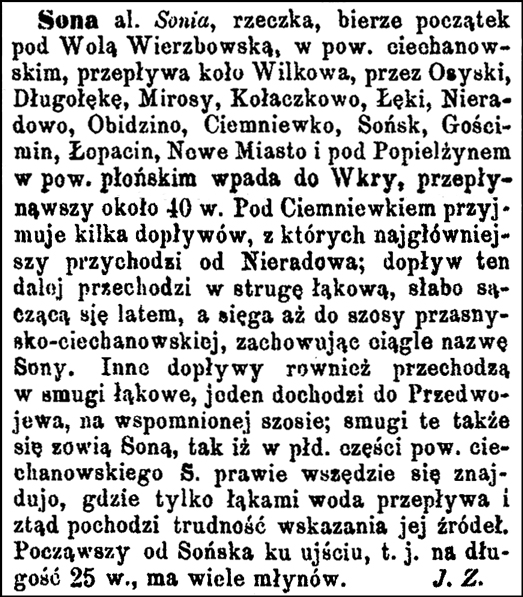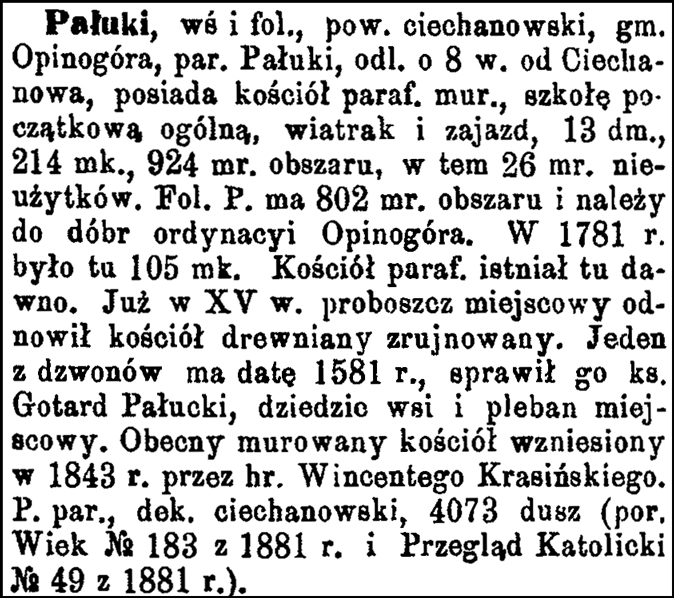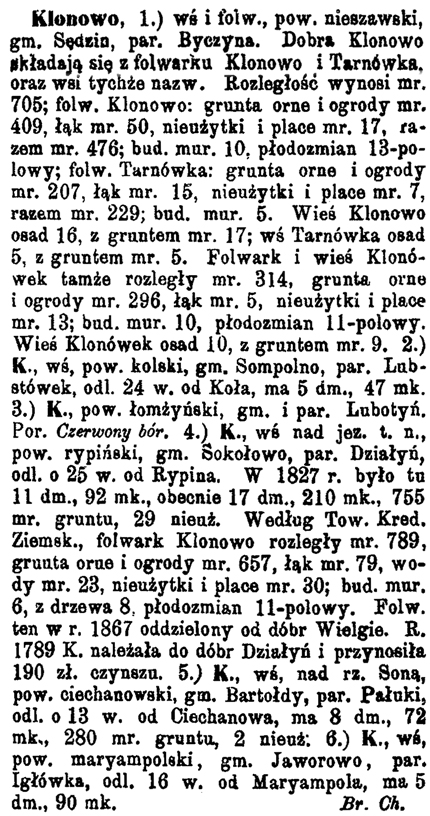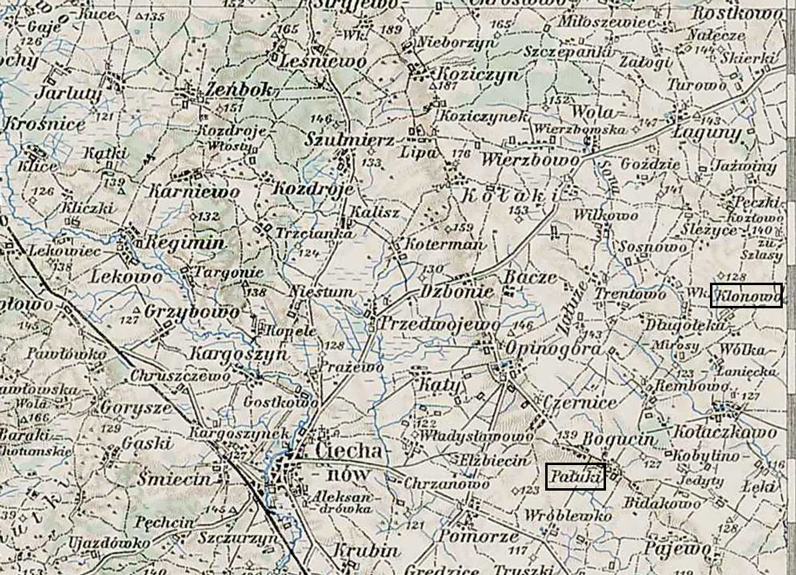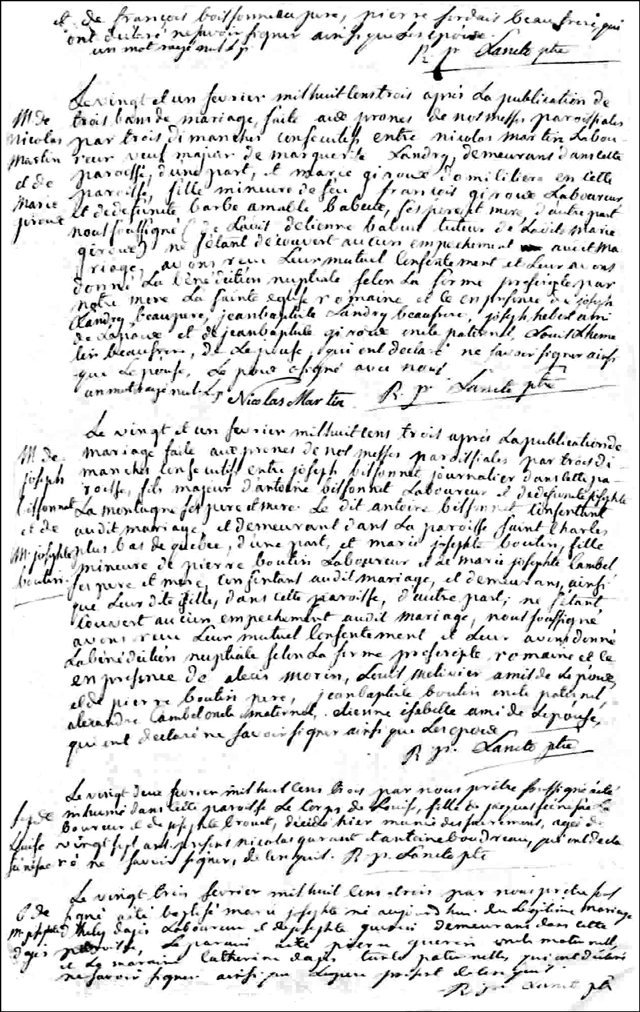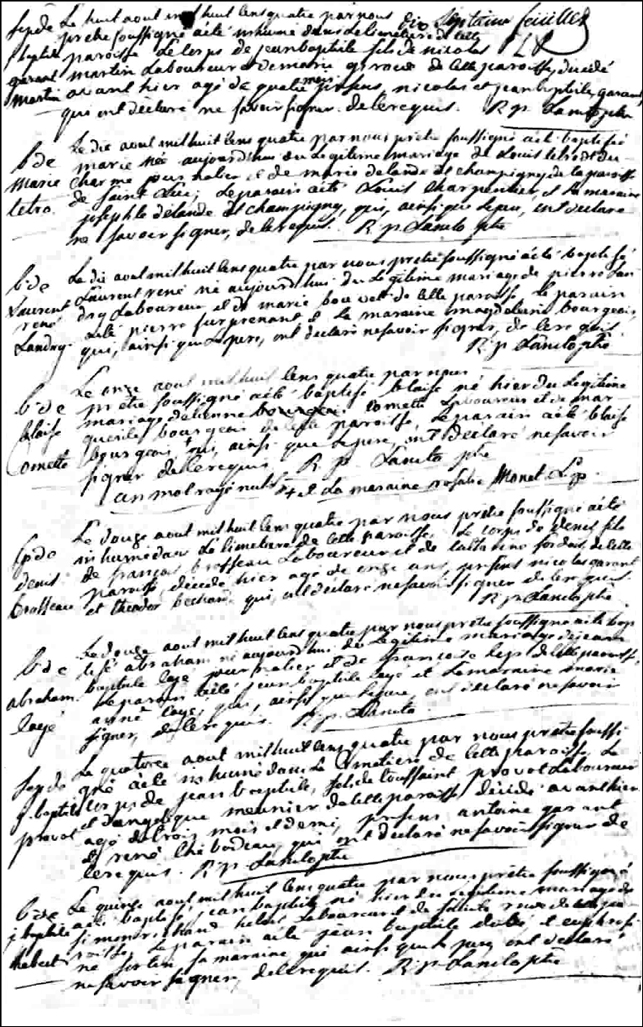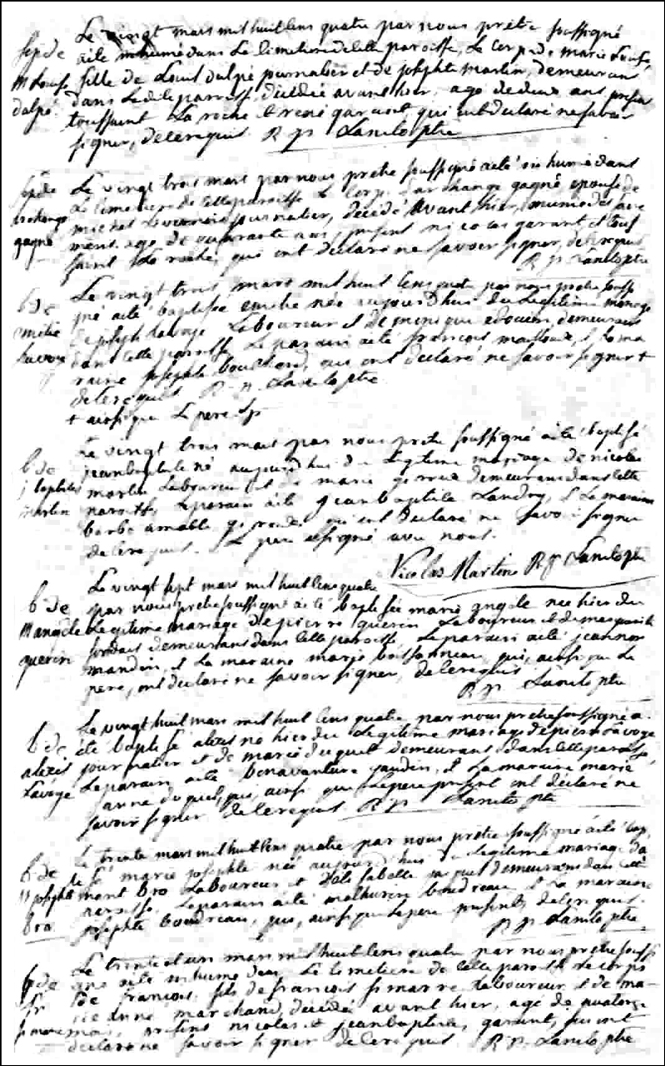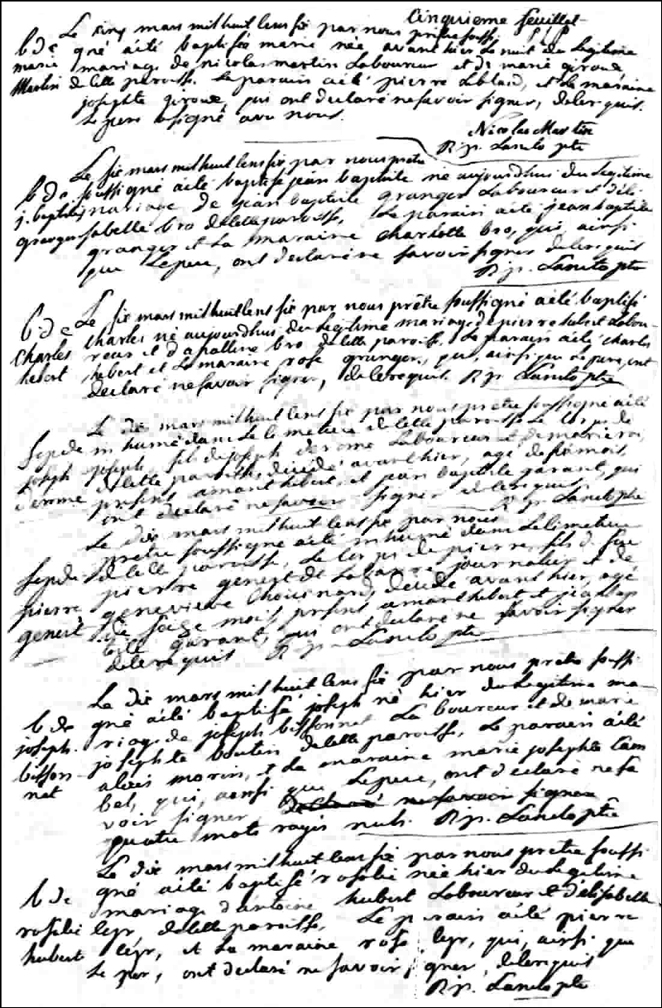The Słownik Geograficzny Królestwa Polskiego i Innych Krajów Słowiańskich (Geographical Dictionary of the Kingdom of Poland and other Slavonic Countries) described Klonowo, the ancestral village of my Niedziałkowski ancestors, as being on the Sona River. The Słownik Geograficzny also has an entry on the Sona River:
Słownik Geograficzny Entry for the Sona River
Source: Chlebowski, Bronisław, Władysław Walewski, and Filip Sulimierski, eds., Słownik Geograficzny Królestwa Polskiego i Innych Krajów Słowiańskich (Geographical Dictionary of the Kingdom of Poland and other Slavonic Countries) – Warsaw 1890, Volume IX, pages 72-72.
Click on the link for a PDF copy of the Słownik Geograficzny Entry for the Sona River. Translated from the Polish, the entry reads:
Sona, or Sonia, a creek, the origin is under Wola Wierzbowska in the Ciechanów Powiat [District], it flows around Wilków, through Osyski, Długołękę, Mirosy, Kołaczkowo, Łęki, Nieradowo, Obidzino, Ciemniewko, Sońsk, Gościmin, Łopacin, Nowe Miasto, and under Popielżynem in the Płońsk Powiat, falling to the Wkra, flowing about 40 versts (0.66 miles per verst) to Ciemniewko, taking on several inflows, from which the major one comes from Nieradowa; this inflow further passes in a meadow stream, it trickles weakly in the summer, but it reaches as far as the Przasnysz-Ciechanów road, always keeping the name of Sona. Other tributaries likewise spread in a meadow trail, one reaches Przedwojewo, at the above-mentioned road; these trails are also called Sona, so that in the southern part of the Ciechanów Powiat, the Sona is found an almost all sides, where the water flows only in the meadows and leads to difficulty identifying its source. Starting from Sońsk toward its outlet, that is for the length of 25 versts, it has many mills.
                                                          J. Z.
Copyright © 2007 by Stephen J. Danko

